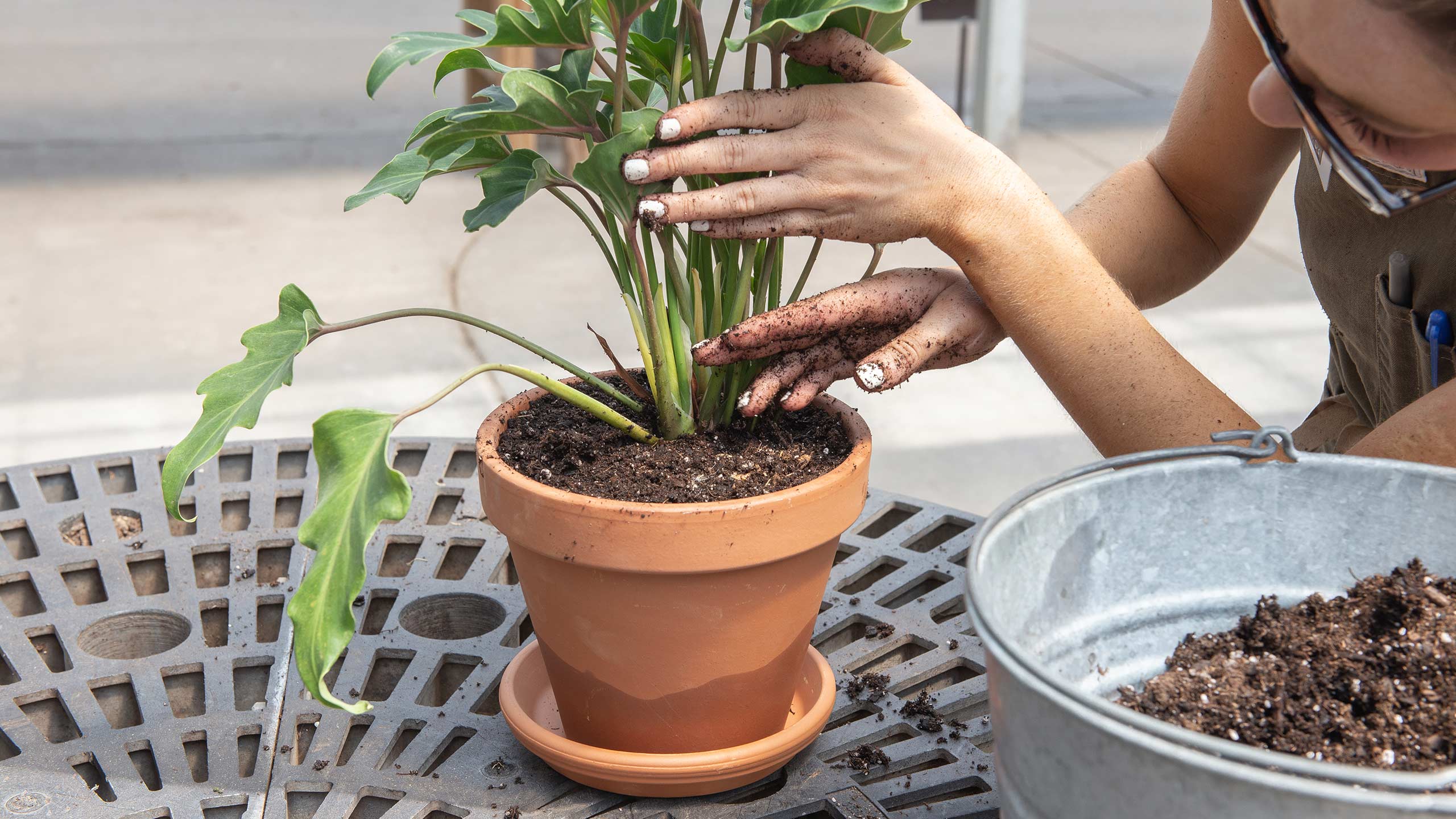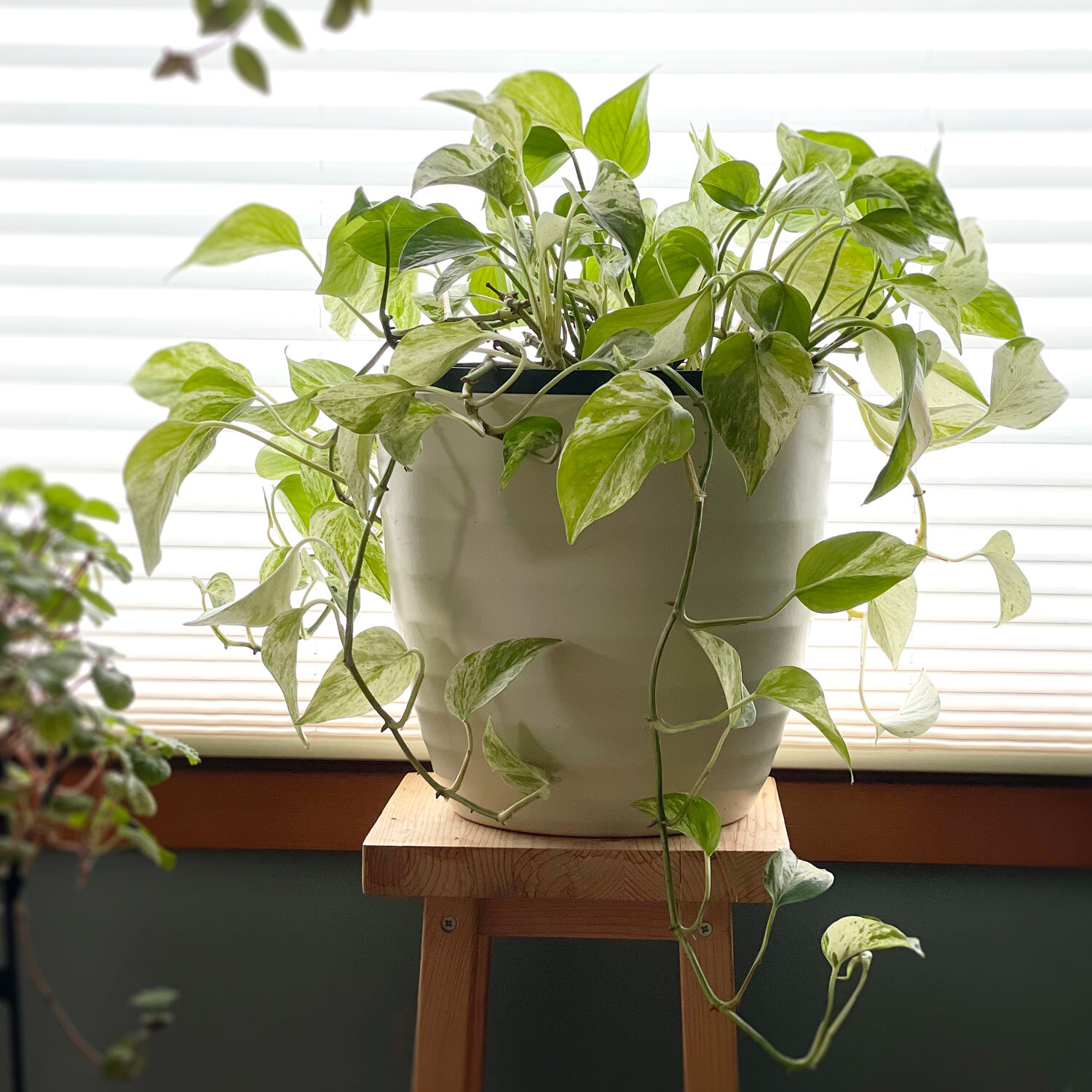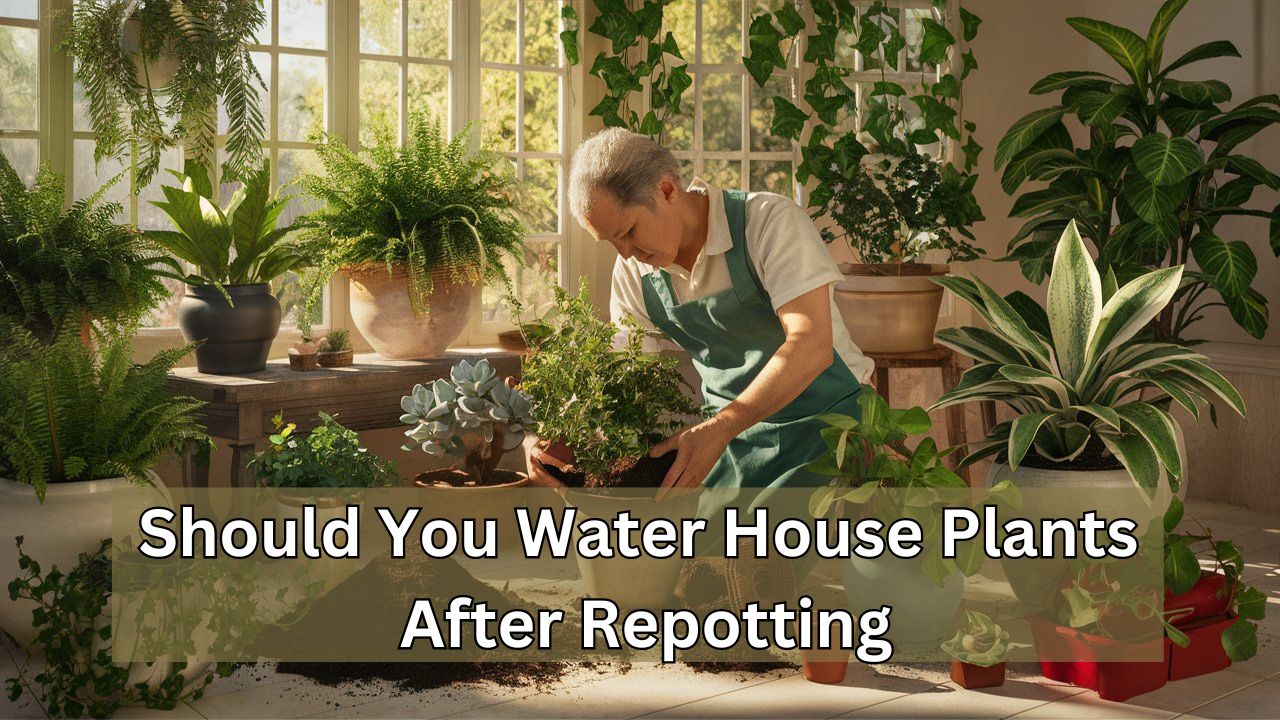Yes, you should water house plants after repotting. This helps settle the soil and reduces transplant shock.
Repotting house plants is essential for their growth and health. Over time, plants outgrow their pots and need more space to expand their roots. Repotting also refreshes the soil, providing essential nutrients that may have been depleted. Proper watering post-repotting ensures the soil settles around the roots, reducing air pockets and helping the plant acclimate to its new environment.
It is crucial to water thoroughly but ensure proper drainage to avoid waterlogging. This practice not only promotes healthier plants but also boosts their resilience and growth, ensuring they thrive in their new pots.
Importance Of Watering After Repotting
Repotting can be stressful for house plants. It’s crucial to water them after repotting. This helps ensure healthy growth and development.
Impact On Plant Health
Watering after repotting helps reduce plant stress. It supplies essential nutrients to the plant. Proper hydration supports the plant’s immune system. This reduces the risk of diseases and pests.
New soil can be dry. Watering helps moisten the soil. This makes it easier for roots to spread and absorb nutrients. Regular watering also prevents the soil from becoming too compact.
Promoting Root Growth
Watering after repotting stimulates root growth. Moist soil encourages roots to grow and explore. This helps the plant establish itself in its new pot. Strong roots are essential for the overall health of the plant.
Water also aids in nutrient absorption. It helps transport essential minerals to different parts of the plant. Well-watered plants grow faster and stronger.
| Benefits of Watering After Repotting | Details |
|---|---|
| Reduces Plant Stress | Helps plants adjust to new soil |
| Prevents Soil Compaction | Keeps soil loose and airy |
| Stimulates Root Growth | Encourages roots to spread |
| Improves Nutrient Absorption | Ensures plants get necessary minerals |
Watering your house plants after repotting is essential. It supports plant health and promotes root growth. Regular hydration ensures your plants thrive in their new environment.
Signs Your Plant Needs Water
After repotting your houseplants, it’s crucial to monitor their water needs. Identifying the right time to water can be tricky. Here are some clear signs your plant might need water.
Wilting Leaves
Wilting leaves are a common sign your plant needs water. When a plant lacks water, its cells lose turgor pressure. This causes the leaves to droop. Wilting leaves might appear soft and limp. If you notice this, check the soil moisture immediately.
Sometimes, leaves can also turn yellow or brown. This indicates severe dehydration. It’s vital to act quickly if you see these changes. Keep an eye on your plant’s overall appearance.
Dry Soil
Dry soil is another clear indicator that your plant needs water. Stick your finger about an inch into the soil. If it feels dry, it’s time to water your plant. You can also use a moisture meter for more accuracy.
Check the soil’s color and texture. Dry soil often looks lighter and feels crumbly. If your plant’s soil is very dry, water it thoroughly. Make sure the water reaches the roots.
Below is a simple table to help you determine soil moisture levels:
| Soil Condition | Action Needed |
|---|---|
| Dry and Crumbly | Water Immediately |
| Slightly Moist | Check Again in 2-3 Days |
| Wet and Soggy | Wait Before Watering |
By observing these signs, you can ensure your houseplants stay healthy and hydrated.
How Much Water Is Enough
After repotting house plants, watering them correctly is crucial. But how much water is enough? Let’s dive into the specifics.
Determining Proper Amount
Each plant has unique water needs. Consider these factors for proper watering:
- Size of the pot
- Type of plant
- Soil type
Use a moisture meter to check soil moisture. Ensure soil is evenly moist but not soggy. Water the plant until water drains from the bottom.
Avoiding Overwatering
Overwatering can harm your plants. Follow these tips to avoid it:
- Check the soil before watering.
- Use pots with drainage holes.
- Water less in winter.
Signs of overwatering include yellow leaves, moldy soil, and root rot. Ensure soil dries out slightly between waterings.
| Plant Type | Watering Frequency |
|---|---|
| Succulents | Every 2-3 weeks |
| Ferns | Once a week |
| Orchids | Every 7-10 days |
Proper watering helps plants thrive after repotting. Always adjust based on plant needs.

Credit: mulhalls.com
Best Time To Water
Repotting houseplants can be a delicate process. Knowing the best time to water them after repotting is crucial. This can ensure the plants thrive in their new pots. Here, we explore the ideal times to water your repotted plants.
Immediate Watering
Immediate watering can be essential for some plants. It helps settle the soil and remove air pockets. This is especially important for plants with delicate roots.
When you water immediately, the soil becomes compact. This helps the plant establish itself faster. Ensure the new pot has proper drainage holes.
Advantages of Immediate Watering:
- Helps in settling the soil
- Prevents air pockets
- Ensures roots get moisture
Delayed Watering
Sometimes, delayed watering is beneficial. This allows the plant to recover from the stress of repotting. It can prevent root rot, especially in plants prone to it.
Wait a few days before watering. This gives the roots time to heal. Make sure the plant is in a shady spot during this period.
Advantages of Delayed Watering:
- Allows roots to recover
- Prevents root rot
- Helps plants prone to overwatering
| Type of Watering | Benefits |
|---|---|
| Immediate Watering | Settles soil, removes air pockets, provides moisture |
| Delayed Watering | Prevents root rot, allows recovery, helps sensitive plants |
Common Mistakes To Avoid
Repotting house plants can be tricky. Many plant owners make common mistakes. These mistakes can harm your plants. Let’s explore what to avoid when watering after repotting.
Overwatering Issues
Overwatering is a major mistake. Plants need time to adjust after repotting. Watering too much can cause root rot. Root rot makes plants weak and unhealthy.
Signs of overwatering include:
- Yellowing leaves
- Soft, mushy stems
- Unpleasant smell from soil
To avoid overwatering, check the soil’s moisture first. Insert your finger about two inches into the soil. If it feels dry, then water lightly. Use a pot with drainage holes. This helps excess water escape.
Underwatering Concerns
Underwatering is another mistake. Plants need water to thrive. After repotting, they need a little more care. If you forget to water, plants will wilt.
Signs of underwatering include:
- Dry, brittle leaves
- Soil pulling away from the pot edges
- Plant looks limp
To prevent underwatering, set a watering schedule. Use a calendar or an app. Check soil moisture regularly. Water your plant when the top inch of soil feels dry.
Here’s a quick guide to help you:
| Condition | Action |
|---|---|
| Soil is dry | Water lightly |
| Soil is wet | Wait before watering |
Remember, each plant is unique. Pay attention to your plant’s needs. Avoiding these mistakes will help your plants stay healthy and happy.

Credit: www.swansonsnursery.com
Tools For Effective Watering
Watering house plants after repotting is critical. Using the right tools ensures your plants thrive. Here, we’ll explore some essential tools for effective watering.
Watering Cans
Watering cans are classic. They provide a gentle flow, preventing soil disturbance. Choose a can with a long spout for better reach. This helps water the roots directly. Some cans have a fine rose nozzle. These are perfect for delicate plants. Metal and plastic cans are available. Pick one that suits your needs and style.
Moisture Meters
Moisture meters are modern tools. They help monitor soil moisture levels. Insert the probe into the soil. The meter will display the moisture content. This prevents overwatering or underwatering. Some meters also measure soil pH. This is vital for plant health. Digital moisture meters are user-friendly. They offer accurate readings for better plant care.
| Tool | Benefits |
|---|---|
| Watering Cans | Gentle flow, Long spout, Fine rose nozzle |
| Moisture Meters | Monitor moisture, Prevent overwatering, Measure soil pH |
Alternative Watering Methods
After repotting your house plants, you might wonder about the best way to water them. Traditional watering from the top isn’t the only option. Let’s explore some alternative watering methods that can help your plants thrive.
Bottom Watering
Bottom watering involves placing the plant pot in a tray of water. This method allows the plant to absorb water from the bottom. It’s a great way to ensure even moisture distribution. Follow these steps for bottom watering:
- Fill a tray with water.
- Place the plant pot in the tray.
- Let the plant sit for 15-20 minutes.
- Remove the pot and let excess water drain.
Bottom watering helps prevent overwatering and promotes healthy root growth.
Misting
Misting involves spraying water onto the plant leaves. It can help increase humidity around the plant. Misting is especially beneficial for tropical plants. Here’s how to mist your plants:
- Fill a spray bottle with water.
- Lightly mist the leaves, avoiding waterlogged soil.
- Repeat every few days or as needed.
Misting is a quick and easy way to provide moisture without soaking the soil. Ensure the leaves dry quickly to prevent mold.
Caring For Different Plant Types
After repotting, different houseplants need different care. Knowing the right care helps them thrive. Here, we explore how to care for succulents, cacti, and tropical plants after repotting.
Succulents And Cacti
Succulents and cacti are unique plants. They store water in their leaves and stems. After repotting, wait a week before watering them. This prevents root rot. Their roots need time to heal and adjust.
- Place them in bright, indirect sunlight.
- Ensure the soil is well-draining.
- Use a pot with drainage holes.
When you water, soak the soil thoroughly. Let the soil dry out between waterings. Overwatering can harm succulents and cacti.
Tropical Plants
Tropical plants love moisture. They need more frequent watering than succulents and cacti. After repotting, water them immediately. This helps settle the soil around their roots.
- Keep the soil consistently moist, but not soggy.
- Place them in a warm, humid environment.
- Mist their leaves regularly for extra humidity.
Check the soil moisture regularly. Use your finger to feel the top inch of soil. If it feels dry, it’s time to water.
| Plant Type | Watering After Repotting | Additional Tips |
|---|---|---|
| Succulents and Cacti | Wait 1 week | Bright, indirect sunlight; well-draining soil |
| Tropical Plants | Water immediately | Keep soil moist; mist leaves |
Understanding the needs of each plant type ensures they thrive after repotting. With the right care, your houseplants will flourish.

Credit: www.reddit.com
Frequently Asked Questions
How Soon After Repotting Should I Water?
Water the plant immediately after repotting. Ensure soil is moist but not soggy. Then, water again after one week.
Should You Water Plants After Transplanting?
Yes, water plants immediately after transplanting. This helps reduce transplant shock and promotes root establishment. Ensure soil is moist but not waterlogged.
What Not To Do When Repotting Plants?
Don’t overwater the plant. Avoid damaging the roots. Don’t use a pot that’s too large. Refrain from repotting during extreme temperatures. Avoid using poor-quality soil.
What To Do When Repotting House Plants?
Gently remove the plant from its old pot. Shake off excess soil. Place it in a larger pot with fresh soil. Water thoroughly. Ensure proper drainage.
Conclusion
Watering house plants after repotting is essential for their health. It helps settle the soil and reduce transplant shock. Keep the soil moist but not waterlogged. Monitor your plants closely for signs of stress. Proper care ensures they thrive in their new pots, leading to vibrant growth and longevity.

My mission is to help you bring the beauty of nature indoors with expert advice, detailed plant care guides, and creative design ideas.




